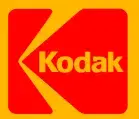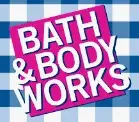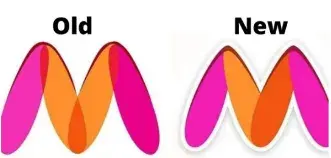By Titiksha Sinha and Bhanu Dhingra
Ensure a Smooth Trademark Application Process
The overall trend of filing applications for protection of various intellectual property rights in India has shown tremendous growth since the past few years. In fact, as per the Intellectual Property Annual Report, 2019-20 released by the Office of the Controller General of Patents, Designs and Trade Marks, the overall filing of trade mark applications alone has shown a jump of 3.39% in the previous year! The increasing trend of filing trademarks applications in India is given below, for ready reference[1]
| 2015-2016 | 2016-2017 | 2017-2018 | 2018-2019 | 2019-2020 |
| 2,83,060 | 2,78,170 | 2,72,974 | 3,23,798 | 3,34,805 |
But the important question is, how many of the trade mark applications filed are successfully registered? Some get stuck in opposition for years, and many are abandoned or withdrawn. The said outline involves further steps to ensure that the process of trade mark registration is hassle-free! Read on to know more.
A strong Trademark
Trade mark law gives protection to trade marks that are distinctive. Basically, the inherent distinctiveness of a trade mark refers to how easily customers identify a trade mark with the associated proprietor and its products/services. The more distinctive a trade mark is, easier it is to get it registered. Words in publici juris, such as ‘Zinc’ for pharmaceutical items, or descriptive words, such as ‘Storage’ for the production of bags etc. are not entitled to protection under the Trade Marks law. The broad categories of marks which are or are not entitled to protection have been discussed in detail in a connected article titled “Making a mark with your MARK”[4]. For ease of reference, a brief table explaining the category of marks and their eligibility for protection is given below:
| Marks which can be REGISTERED | Marks which CANNOT be Registered |
Coined or Fanciful Marks– These are inventive or have no real meaning. For example, KODAK ( )for cameras,EXXON ( )for cameras,EXXON ( ) for mobiles are inventive and imaginative words. ) for mobiles are inventive and imaginative words. |
Non Distinctive Marks- Not capable of distinguishing the goods or services of one person from other. For example, SIMATUL was not granted registration due to prior existence of CIBATUL. |
Arbitrary Marks- Unrelated to the nature of goods or services. For example, APPLE ( ) for consumer electronics, the four colored logo of MICROSOFT ( ) for consumer electronics, the four colored logo of MICROSOFT ( ), UBER for cabs. ), UBER for cabs. |
Customary Marks- Words which have become common to the trade. For example, ESCALATOR has become generic in respect of ‘moving stairs’, VAC PAC is short for ‘Vaccum Packed’ etc. |
Suggestive Marks- Merely suggest the nature of goods or services, without explicitly stating the same. For example, redBUS ( ) hints at bus services, but does not explicitly state the services. ) hints at bus services, but does not explicitly state the services. |
Deceitful Marks- which contain any false or misleading matter. For example, LIKE ME was found to be strikingly similar to the famous cosmetics brand LAKME.[5] Further, LIKEME/ LIKE ME formative marks in Class 03 have either been withdrawn, abandoned or opposed by Hindustan Unilever Ltd. For example., Application No. 541926, Application No. 3126264 etc. |
Descriptive Marks- Explicitly describe the nature of goods or services, however can be granted registration if they have acquired distinctiveness/secondary significance. For example, PIZZA HUT ( ), DUNKIN DONUTS( ), DUNKIN DONUTS( ), BATH AND BODY WORKS ( ), BATH AND BODY WORKS ( ) and CAFÉ COFFEE DAY ( ) and CAFÉ COFFEE DAY ( ) have acquired secondary significance on account of extensive use and popularity. ) have acquired secondary significance on account of extensive use and popularity. |
Marks which are hurtful to religious sentiments. For example, registration of the mark. For example, use of the trade mark containing the word ‘Ganesh’ for Bidis was not allowed, Ramayan was denied registration as it was held to be taking advantage of the Hindu Gods. |
Marks which contain scandalous or obscene matter. For example, the logo for the e-commerce website ‘Myntra’ was modified after a complaint was filed alleging that it is insulting and offensive to women  |
|
| Marks are prohibited under the Emblems and Names (Prevention of Improper Use) Act, 1950. For example, the national flag, pictorial representation of Mahatma Gandhi Ji, cannot be granted registration. It is interesting to note that the term UNO (word) is not registered in India in any of the classes. In fact, one of the Application No. 2510389 for the mark UNO filed by Asian Paints Limited, has been objected by the Learned Registry stating that “UNO is a prohibited mark under the Emblems Act, 1950”. | |
| International Non-Proprietary Names (INN) as per declaration of WHO. For example, LETROZOLE. Recently, Sun Pharma and Hetero Healthcare have both been allowed to use their trade marks LETROZ and LETERO respectively. It has been held that both the marks have been adopted from the initial letters of the INN, LETROZOLE. [6] |
Disclaimer: This article features images of brands for informative purposes only, which are protected by the Fair Use guidelines of the Trade Marks Act. All rights reserved to their respective owners. We do not claim any rights over the same.
Not a previously used or registered Trademark
Simply put, conducting “Due diligence” means making sure that the trade mark being applied for has not been already used or applied/registered by another owner for similar goods and services, prior in time. A prudent proprietor must conduct a basic trade mark search in the home country as well as potential export markets and expansion lines to avoid any objections in the future. This will also prevent the new Applicant from himself interfering with any third party’s bonafide rights, and save a considerable amount of time, money and effort. This process can be carried out with a simple search on the Internet, followed by a thorough trade mark clearance search on the Trade Marks Registry’s website as well as in-house databases.
It is also a good idea to see if the corresponding domain name/internet address is available and whether the same can also be used as a username on social media websites such as Facebook, Instagram etc. Needless to say, be sure that your choice of domain name/username does not conflict with a third party’s trade mark. This would help the proprietor connecting with the public at large, and build upon the goodwill and reputation of its brand and associated trade mark.
The Perfect Trademark Application
Any individual or an entity, claiming to be the proprietor of a trade mark used or proposed to be used by them, can file a trade mark application in respect of the desired specification of goods or services. The trade mark application should be filed in the prescribed form, i.e., FORM TM-A, with the Trade Marks Registry of the appropriate jurisdiction, along-with the prescribed fees and documents. The application must contain the trade mark, proper description of the goods/services, name and address of Applicant and agent (if any) with power of attorney alongwith the period of use of the mark.
It must be kept in mind that in case you have already commenced use of the trade mark before filing an application for the same, then the trade mark application must be filed with an appropriate user claim along-with documents in support of such use by way of a “user affidavit” (and invoices, bills etc. showing commercial use of the trade mark). Non-compliance of the said requirement would most likely attract an objection from the Learned Examiner of the Indian Trade Marks Registry.
Conclusion
Following the above-mentioned steps should ensure that the trade mark application passes the initial phase of screening at the prosecution stage. The Applicant may keep track of its application (via https://ipindiaonline.gov.in/eregister/eregister.aspx) to ensure that preliminary objections, if any, raised by the Learned Examiner are responded to and averted timely.
[1] Ibid
[2] Annual Report (2019-2020), The Officer of the Controller General of Patents, Designs, Trade Marks and Geographical Indications, Government of India
[3] Ibid
[4] https://ssrana.in/articles/making-a-mark-with-your-mark/
[5] M/s Lakme Ltd. vs M/s Subhash Trading and Others (DLH)- 1996-08-17
[6] Sun Pharmaceutical Laboratories Ltd vs Hetero Healthcare Ltd FAO (COMM) 96/2022
Related Posts


